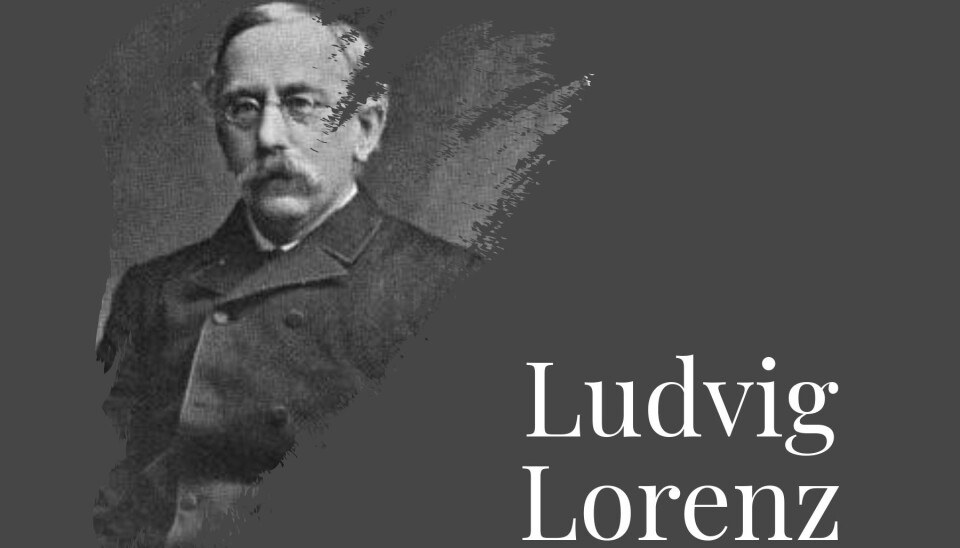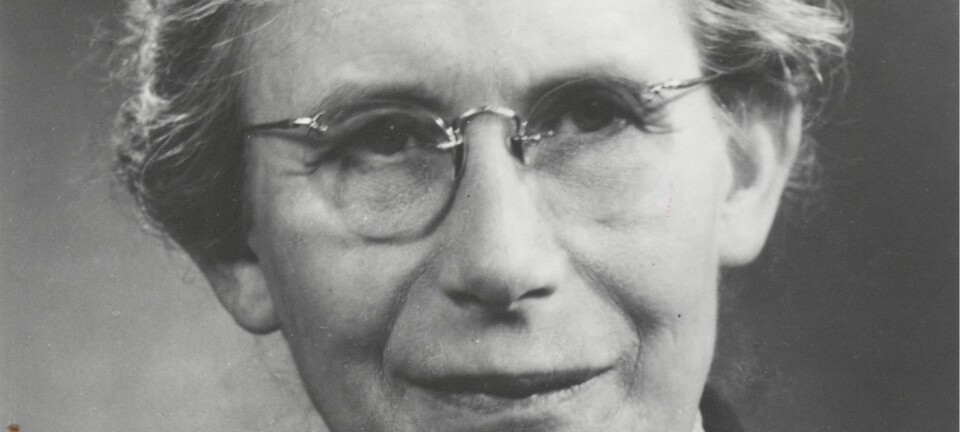
Why the world should remember this forgotten Danish physicist
The little-known physicist Ludvig Lorenz ought to be better known, for he truly stands alongside the great figures in international science.
Denmark has produced some of the world’s most famous scientists.
H. C Ørsted discovered electromagnetism in 1820 and a century later Niels Bohr introduced his epoch-making theories of atomic structure.
But have you ever heard of the physicist Ludvig Lorenz?
Perhaps not, for until recently Lorenz remained an unwritten chapter in the history of Danish and international science, typically relegated to footnotes. And yet, he is not quite as anonymous as he used to be.
On the contrary, scientists increasingly see him as one of the most important physicists of the nineteenth century, worthy of being grouped together with better known giants such as Ørsted and Bohr.

In my new book, I delve into the history of he little known Lorenz and rediscover the contributions he made to science.
A life in the periphery of science
So, who was Lorenz and why should his scientific work be remembered?
Ludvig Valentin Lorenz (1829-1891) was born in Elsinore in Northwest Denmark. After studying at the Cathedral School in Nykøbing Falster in the south of the country, he entered the Polytechnic College, which would go on to became the Technical University of Denmark (DTU).
Although he graduated as a chemical engineer, his true love was physics and mathematics. For many years, he was unable to get a job and consequently lived on stipends and as part-time physics teacher at Danish high schools.
Lorenz never obtained an academic position at either the one university that existed in Denmark at that time (the University of Copenhagen) or the Polytechnic College, but in 1866, he was appointed teacher at the Royal Military High School. In this humble position, he taught physics for two decades.
Despite his lack of academic credentials, he was recognised as a brilliant theoretical physicist, and was elected a member of the prestigious Royal Danish Academy of Sciences and Letters.
As further indication of his recognition, in 1887 he received a life-long grant from the Carlsberg Foundation that allowed him to work as a free researcher for the rest of his life. Unfortunately, this privileged position lasted only four years as he unexpectedly died by a heart attack at the age of 62.
Pioneering work in optical theory
The mathematically gifted Lorenz specialised in optics, aiming to understand the properties of light in mathematical terms.
His approach led to general equations, which described light and its behaviour in detail, such as reflection and refraction in transparent bodies. He was able to derive for the first time a specific law relating a body’s refraction index to its density. A law of this kind had first been suggested by none other than Isaac Newton, but the correct answer only came with Lorenz’s work.
The law is still part of modern physics and the same is the case with a complex theory of light scattering on spherical molecules, which Lorenz completed shortly before his death.
Lorenz’s fundamental theory was later reformulated by the German physicist Gustav Mie and is therefore known as the Lorenz-Mie theory. This theory is widely used today, not only in physics but also in a variety of other sciences including astronomy, meteorology, and biology.
But Lorenz’s contribution of 1890 was written in Danish, and its significance was only recognised in the 1960s – even within Denmark.
An electrical theory of light
As first shown by the Scottish physicist James Clerk Maxwell in 1865, light can be explained as electromagnetic waves propagating in a hypothetical weightless substance called the ether.
Inspired by Ørsted’s vision of a unification of the forces of nature, two years later Lorenz independently presented an electrical theory of light that led to the same results as Maxwell’s.
However, Lorenz dismissed the ether as a fiction, a view, which much later was substantiated by Einstein’s theory of relativity.
Lorenz’s theory of 1867 was the work of a genius. But at the time, it failed to attract attention and was eventually forgotten. Still, in the modern theory of electromagnetism as applied in quantum theory and elsewhere there are ruminations going back to Lorenz’s work. For example, the so-called “Lorenz gauge,” known to all physicists, refers to a concept introduced by Lorenz in his 1867 theory.
An unsuccessful inventor
Although he was a mathematical physicist who thrived on abstract equations, Lorenz also applied his talent to technological innovations.
Electrical power was at the time a new and exciting technology to which Lorenz contributed by designing a special type of dynamo. The dynamo was granted a patent and received a gold medal at the international electrical exhibition held in Paris in 1881.
But, although the machine found use in Danish electrical industry its success was short-lived. For Lorenz the invention of the dynamo machine was not as economically rewarding as he had hoped.
He also investigated how to make transmission of telephone currents possible over long distances – in the 1880s telephony was limited to just a few hundred kilometres. Based upon theoretical considerations he designed a telephone cable much superior to traditional cables, but in this case his invention remained theoretical and did not result in a patent.
Nonetheless, many years after his death Lorenz’s ideas were transformed into widely used cables for practical telephony. His ideas were brilliant, but his lack of entrepreneurial talent made him an unsuccessful inventor.
The fate of Lorenz and his work
Given that today Lorenz is increasingly recognised as one of the great physicists of the nineteenth century, why was his work not properly appreciated before now? And why was he effectively written out of history?
Lorenz was a solitary person, self-taught, with no close relationships with other physicists.
Scientifically isolated as he was, he was content with conducting good and original science without caring much about his reputation among his peers.
His work was mathematically demanding and on such a high level of abstraction that it was hardly understood by his colleagues in Denmark.
Other, better-known physicists would independently discover some of Lorenz’s main contributions, which were consequently attributed to them. Lorenz’s contribution, meanwhile, was overlooked.
I hope that through this book, we can rediscover the genius and hard work of one of the world's most significant, if largely forgotten, scientists.









